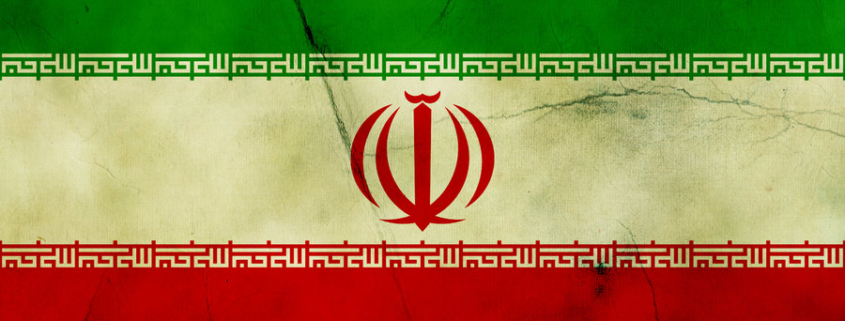Surfing the Web on an iPhone in Iran
A research paper published at the end of 2011 foresaw a leap in the use of smart-phones in the Middle East. Iran is considered the largest market for cellular phones in the region, and the rate of penetration of smart-phones in the UAE (United Arab Emirates) market (47%) overshadows even that of the United States market (40%). The rate of penetration of cellular phones in the region is expected to cross the 100% threshold during 2012, and the estimated number of users in the region is expected to rise from 210 million to 250 million. On the other hand, the rate of penetration of cellular technology is expected to be 64% in China and 70% in Asia.
Along with the expected increase in the use of cellular phones, it is expected that by 2016 there shall be a decrease in 2nd generation phones in Iran and Saudi Arabia, while at the same time there shall be an increase in the number of smart-phone users in our region. The sharp increase is expected in Iran- at the end of 2016, and it will surpass Saudi Arabia and become the country with the largest number of 3rd generation phones in the region. Iraq is expected to be in the 3rd place. But, not to worry, Saudi Arabia is expected to return to the arena and lead the region with 4th generation phones, and after that, the UAE, which has already launched such services in October of 2011. These are amazing and thought-provoking data, which point to the current situation in the field of cellular technology in the Middle East, despite the great potential and natural differences that exist between the different countries. The information is rather surprising, considering the perceptions on the integration of technology in the Middle East, according to its conservative, social and centralized nature.
A technological Middle East
This surprising information was validated when it was announced lately that Saudi Arabia leads the world with a 188% penetration rate of cellular phones in the market, compared with only 59% in 2005. Among the countries of the Persian Gulf, the leading countries are Oman (165%), Kuwait (106%) and the United Arab Emirates (145%).
In addition, Iraq is currently undergoing the steps necessary for licensing a fourth cellular operator, Pakistan holds the 8th place in the world for the largest number of cell-phone users, and the 5th place in Asia. 67% of the country’s population uses cell-phones, and 23% of them use smart-phones, including the newest models on the world market. Meanwhile in February 2012, it was reported that the Pakistani army was cooperating with a Chinese company in developing a tablet- for the purpose of “strengthening the national economy”, and that the project may include the development of a portable computer and a digital book-reader (PAC Pad1, PACnBook1, PAC eBook1). All this is happening alongside with political problems with licensing third generation cellular traffic (3G) in the country and attempts to censor internet and cellular traffic in the country.
Communicating with the world
So what can we learn from all this information? The most important lesson is that the real picture is very different from the picture that we get about technology and cell-phones in the Middle East, and that there is a very strong market for it, just like the Middle East has the second largest increase in internet use during the years 2001-2011, after Africa.
In addition, there appears to be a change from a market dominated by NOKIA devices, to a market dominated by devices that run on Google’s Android operation system, along with a huge increase in cell-phone use in the Middle East, which is expressed in the largest penetration rate in the world. This strengthens the general picture, which shows that the Middle East is a region with great technological variance, and that in many countries there are populations who strive to be like any other, to be equipped with advanced devices, and to put them to advanced uses, along with leisure activities.
The strength of these cellular devices is not found only in their ability to make direct vocal contact between individuals, but also mainly in centralized societies which are characteristic of the Middle East. Their truly important role has been proven many times over the past years, when they served as the device through which one can document events in real-time where they are happening and forward the photographed or filmed information directly throughout the world by uploading it onto the internet. The films documenting the dying moments of the Iranian girl, Nada Sultan, in real-time, who was killed during the protests in June 2009 by security forces’ fire, and also the documentation of the horrifying lynch carried out on Moammar Qaddaffi, uploaded in films by the rebels who took part in the occurrence can vouch for this.
Will cell-phones bring a revolution to the Middle East? Not necessarily. Similarly to the internet, they are a means for communication and a foundation for creating events and reporting them. People create revolutions in which the internet and cellular technology are only tools, but it is important to remember that the real revolutions are those daily revolutions which allow direct communication between the citizens of one country or between citizens of different countries, or between the sexes in such religious and conservative societies as those that exist in our region.
Because of the large usage, on the one hand, and the conservative and centralized character of the Middle East, on the other hand, the cell-phone’s societal role in the small daily changes in our region is more significant, continuous and long-term than any replacement of one regime with another.
This post is also available in:
עברית

